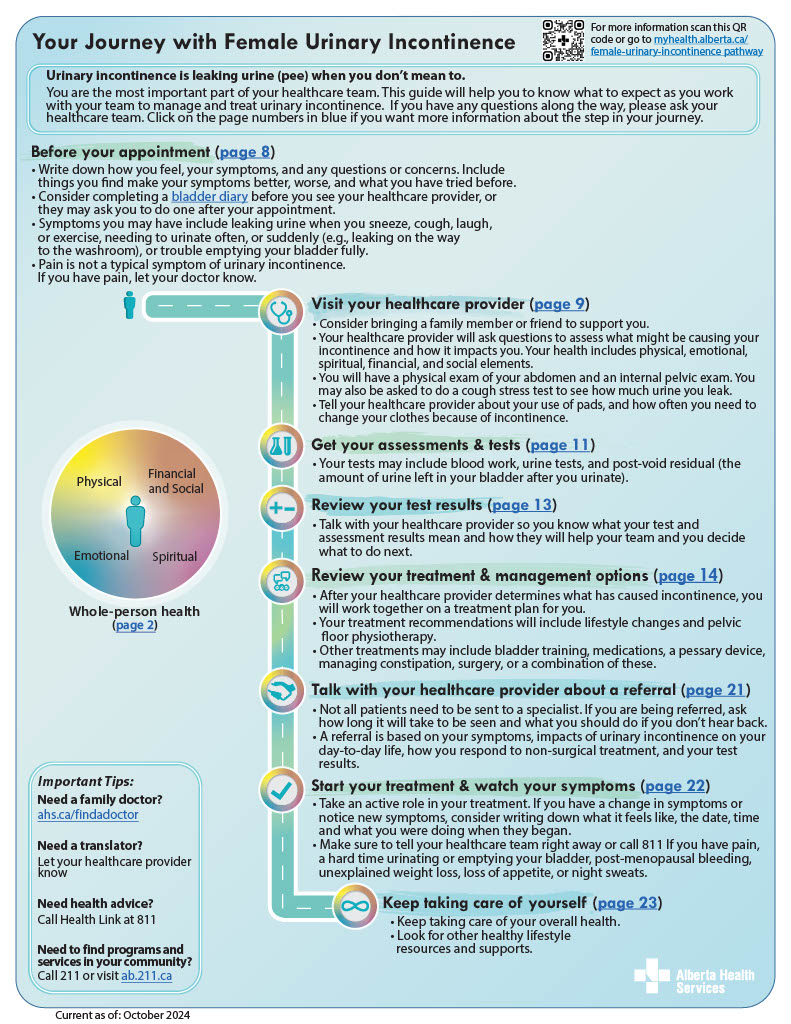As you try different treatment options, remember that if something doesn't work the way you thought it would, think about other options. Talk with your healthcare team to find what will work for you.
Take an active role in your treatment and keep watching your symptoms. If your symptoms change or you have a new symptom, you can make a note of what it felt like, the date, time, and what you were doing when you noticed the change.
Contact your healthcare provider
Call your healthcare team anytime you:
- have questions
- notice your symptoms getting worse
- have problems with your medicine
- haven't gotten test results or heard about an appointment as expected
Get medical help now
If you have any of the following, contact your healthcare team or call 811 right away:
- symptoms of a
urinary tract infection, such as fever, chills, blood in your urine, and feeling unwell
- pelvic (belly area) pain
- trouble urinating or emptying your bladder fully
-
post-menopausal bleeding (period-like bleeding that happens 12 months or more after your regular periods have stopped)
- unexplained weight loss, loss of appetite, or night sweats
Your Pathway

Download or print the
full patient pathway (PDF) and
summary (one-page PDF) to learn more about how to manage and treat female urinary incontinence.
Patient Pathway  Summary
Summary 
